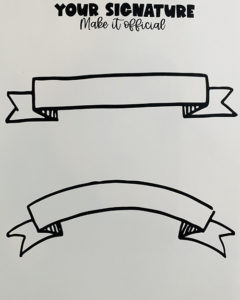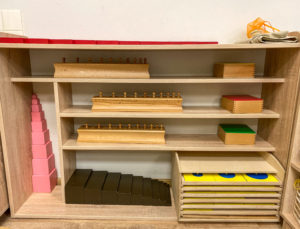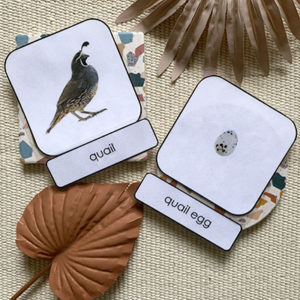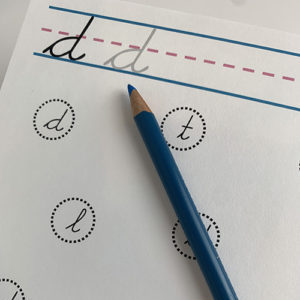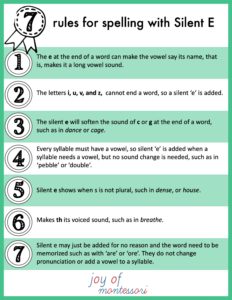Learning to love teaching cursive
I love teaching cursive to young students. I was actually very sad when I learned it was no longer part of the Common Core curriculum. I was also surprised when I heard other teachers disliked teaching it. I am not well versed enough in they way cursive is taught in other schools, but in Montessori I find the process very simple and natural for even the youngest kids to pick up. I also noticed that somehow the kids who learn to write and read in cursive first have no difficulty learning to read in print, but the opposite is true for those who only learn print. They cannot automatically read in cursive.
7 Reasons You Should be Teaching Cursive Handwriting First
- No more letter reversals
Cursive avoids the issue of common letter reversals in print with letters such as ‘b’, ‘d’, ‘p’, and ‘q’. In cursive the shapes of these letters are all distinctly different, whereas in print these letters are the *exact* same shape turned in a different direction. This confusion affects many children, not only those with a learning difference like dyslexia. - Same starting point
All cursive lowercase letters begin on the bottom line as opposed to print which has multiple starting points. - Starts in same direction
All cursive lowercase strokes begin in the same direction, towards the right. - Smooth and continuous
Cursive is smooth and avoids all the starts and stops with print writing. All lowercase letters are formed with continuous strokes so the child never needs to lift their pencil from the paper. (While uppercase cursive letters do not have to connect, the following uppercase letters can: A, C, E, H, J, L, M, N, R, U, X, Y, Z) - More natural
Some researchers believe the smooth loops of cursive mimics how children naturally write when they first make marks: in swirls and continuous scribbles. - Logical word beginning and end
Words spelled in cursive easily shows a child where a word begins and ends – which can aid in reading comprehension of handwritten text or the child’s own handwriting which they are often required to recite or read their own notes. - Faster to write
Some researchers say cursive is faster than print, but I have also read that many people will eventually make their own print/cursive combination of writing that is fastest or most comfortable for them. - Fancy and fun!
Cursive is arguably a “fancier” way to write! It is not a style seen every single day on screens and in books. This gives it a special quality to it. Knowing cursive gives children a choice of how to write, and some may simply prefer the style.
How to Keep Teaching Cursive Fun
With my private tutoring students, not every family wants to purchase their own set of sandpaper letters, so I created several types of cursive letter tracing worksheets for children to practice and found them just as effective as the real sandpaper letters. I have also created supplementary material for kids to practice. Usually I tailor these items to a particular student’s interests such as when I had a student who LOVED the musical Grease and I would provide worksheets with pictures of the characters and the songs they sang.
If you have time to customize your student’s activities to this
level, I encourage you to collaborate with them on what they are most interested in! However, I know a lot of teachers and homeschooling parents are short on time so I have created a few resources that are no-prep and fun for beginners as well as more advanced cursive students.
- Cursive Letter Hunt

This activity allows children to hunt for the letter as well as practice writing the letter form in small bubbles or on the lined section provided at the top of the page. This is a fun, no-prep activity for children learning to write in cursive.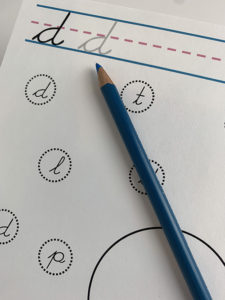
- Cursive Bingo
My students absolutely loved this lowercase bingo game and used many different colored pencils to trace the letter paths. As a teacher this was a wonderful assessment tool for me to see which letters the children still had trouble recognizing or writing.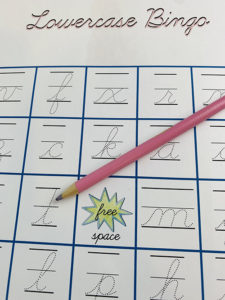
- Cursive PoetryOnce children are ready to write full words and sentences, I created a bundle of Holiday Themed Cursive Poetry featuring short excerpts of poems related to different holidays: Halloween, Hanukkah, Thanksgiving, Christmas, Valentine’s Day, and St. Patrick’s Day.

- Cursive Signature Design
This is one of my favorite act - ivities for students who have already mastered the basics of cursive handwriting and want to find their own style. The resource contains famous signatures to study and read, information about the function of a signature, vocabulary and a quiz related to signatures and documents, a bit about the “science” of graphology, and examples of fonts to inspire students when designing their own signature as well as several templates on which to write their final signatures.
